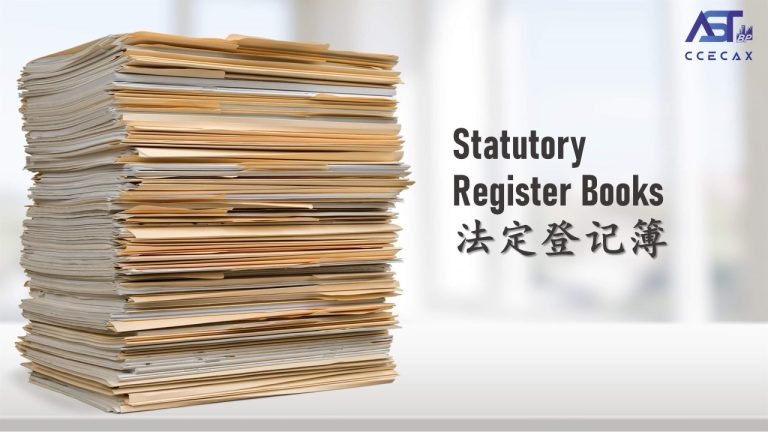BLOG
HIRE PURCHASE
July 19, 2024
bp-ast
Hire Purchase
Definition :
Hire purchase is a form of finance. Essentially you have bought the item and used a loan (from the finance company) to pay for it.
Accounting for Hire Purchase :
For accounting point of view both hire purchase and instalment payment system are same. Before accounting, we should know following things :-
a) Cash price is that price which will be paid if any asset is purchased on cash without installment
b) Hire price = Cash price + Interest for risk of giving asset on instalment
c) Down payment = Payment at the beginning of deal of hire purchase
Benefits of Hire Purchase:
Kind to your cash flow
Access High – Spec Assets
Lower Interest Than Other Funding Options
It is possible to claim capital allowance against taxes
法定登记簿和记录
July 12, 2024
bp-ast
法定登记簿和记录
法定登记簿可以保存在注册公司秘书办事处或董事批准的任何其他地方。通常情况下,法定登记簿根据第14条或第46(3)条的规定保存在注册公司秘书办事处,以便于公司秘书不时地维护和更新公司的信息。
“登记簿”包括任何登记簿或其他信息记录以及任何账目或会计记录,无论如何编纂、记录或储存,还包括任何文件。
最常见的法定登记簿有:配股登记簿、成员登记簿、董事登记簿、经理登记簿、秘书登记簿、大股东登记簿、转让登记簿、董事持股登记簿、抵押登记簿和会议记录簿。
登记簿
登记簿是由以下细节和信息组成的一本书。
董事登记簿
经理的登记簿
公司秘书的登记簿
成员(股东)登记册
抵押登记簿
股份转让登记簿
持股登记册
帐簿
会议记录簿
会议记录本将保存所有的董事和股东会议记录,以及董事和股东通过的决议。
以下内容通常在会议记录本中找到:
第一次董事会会议
开设银行账户的董事会决议
年度会议文件
临时股东大会文件
董事会关于购买房产/汽车的决议
申请或接受银行贷款的董事会决议
董事会关于确定年终的决议
我们作为贵公司的公司秘书,将保持所有记录的更新,并登记公司的任何变化。
CAPITAL ALLOWANCE
July 5, 2024
bp-ast
资本津贴
什么是资本免税额 ?
资本免税额是指花费在企业资产上的可从企业税务的金额。
为何要求资本免税额 ?
这意味着你可以保留更多的现金,可以进行再投资,促进公司增长。
索赔的好处 ?
减少或完全免除纳税义务
对高收入者申请磨损津贴和大多数工业建筑物津贴没有限制
改善现金流,保持现金在您的业务!
可能的现金退款/税款偿还
Statutory Books and Records
June 28, 2024
bp-ast
Statutory Books and Records
The statutory register books can be kept at the registered office or any other place as approved by the directors. Normally, the statutory register books are kept at the registered office on Section 14 or Section 46(3) for the Company Secretary to conveniently maintain and update the company’s information from time to time.
“Books” includes any register or other record of information and any accounts or accounting records, however compiled, recorded or stored, and also includes any documents.
The most common statutory books are Register of Allotment, Register of Members, Register of Directors, Register of Managers, Register of Secretaries, Register of Substantial Shareholders, Register of Transfer, Register of Directors’ Shareholdings, Register of Mortgages and Minutes Book.
Register Book
The Register Book is a book consist of the following details and information:
Register of directors
Register of managers
Register of company secretaries
Register of members (shareholders)
Register of charges
Register of transfer of shares
Register of shareholdings
Books of account
Minutes Book
The Minutes Book will keep all minutes of directors’ and shareholders’ meetings as well as resolutions passed by directors and shareholders.
The following are normally found in the Minutes Book:
First Board of Directors Meeting
Board Resolution to open bank accounts
AGM documents
EGM documents
Board Resolution to purchase properties / cars
Board Resolution to apply or accept banking facilities
Board Resolution to fix year end
We, acting as your company secretary, will keep all the records up to date and register any changes made by the company to Suruhanjaya Syarikat Malaysia (SSM).
CAPITAL ALLOWANCE
June 21, 2024
bp-ast
Capital Allowance
What is Capital Allowance ?
Capital allowance is an amount of money spent on business assets that can be subtracted from what a business owes in tax.
Why Claim Capital Allowance ?
You can retain more cash that can be reinvested to foster company growth.
Benefits of claiming ?
Reduce or completely shelter a tax liability
No restriction on high earners claiming wear and tear allowances and most industrial buildings allowances
Improve cash flow and keep cash in your business!
Possible cash refund / repayment of taxes
什么是会计周期
May 31, 2024
bp-ast
会计周期
什么是会计周期 ?
会计周期是完成公司簿记任务的基本八步流程。
它为企业财务活动的记录、分析和最终报告提供了清晰的指南。
会计周期的主要目的是什么?
会计周期的主要目的是确保财务报表的准确性和一致性。
会计周期步骤
1.识别交易 –> 2. 在日记帐中记录交易 –> 3. 将交易过帐到总帐 –> 4. 计算未经调整的试算表 –> 5. 分析工作表以识别错误 –
–> 6. 调整日记帐分录以修复错误 –> 7. 创建和生成财务报表 –> 8. 关闭会计期间的账簿




